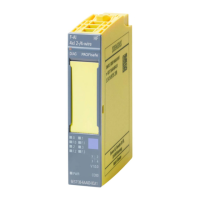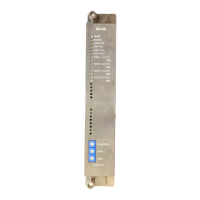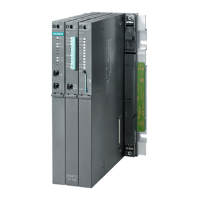Fail-Safe Modules
7.6 EM 4 F-DI/3 F-DO DC24V PROFIsafe digital electronic module
ET 200S Distributed I/O System - Fail-Safe Modules
144 Installation and Operating Manual, 08/2008, A5E00103686-07
Discrepancy Time Parameter
You can define the discrepancy time for each channel pair with this parameter. The entered
value is rounded to a multiple of 10 ms.
Requirements
Parameter settings:
● Type of sensor interconnection: "2-channel equivalent" or "2-channel nonequivalent"
Discrepancy Analysis and Discrepancy Time
When using a dual-channel or non-equivalent sensor which measure the same process
variable, the sensors interact with a slight time delay due to the limited precision of their
arrangement.
The discrepancy analysis for equality/non-equality is used at fail-safe inputs to detect errors
based on the timing of two signals with the same functionality. Discrepancy analysis is
initiated when different levels (when testing for nonequivalence: same levels) are detected
for two associated input signals. A test is conducted to determine whether the difference in
levels (when testing for nonequivalence: the consistency) disappears after a programmable
period of time known as the discrepancy time. If not, this means that a discrepancy error
exists.
In most cases, a discrepancy time is started, but does not fully expire since the signal
differences are cleared within a short time.
Select a discrepancy time of sufficient length so that in case of no error, the difference
between the two signals (when checking for nonequivalence: the consistency) has definitely
disappeared before the discrepancy time expires.
Response During Discrepancy Time
While the programmed discrepancy time is running internally on the module, either the last
valid valueor "0" is returned to the safety program on the F-CPU by the input channels
involved, depending on the parameter settings for the behavior of discrepancy.
Response During Discrepancy Time
If the input signals are not equivalent following expiration of the specified discrepancy time
(when checking for nonequivalence: no inequality), for example due to wire break at a
sensor line, the system detects a discrepancy error and generates a "discrepancy"
diagnostic message in the diagnostic buffer of the F-I/O module to identify the faulty
channels.
Reintegration After Discrepancy Error Parameter
With this parameter you can define the criteria for clearing discrepancy errors which, when
fulfilled, facilitate reintegration of the relevant input channels. Programming options:
● "Zero signal test required" or
● "Zero signal test not required"
"Zero signal test required"
When "Zero signal test required" is set, a discrepancy error is not considered cleared until a
zero signal is set at both input channels.
When using nonequivalent sensors, that is, "2-channel nonequivalent" is set at the "Type of
sensor interconnection" parameter, the zero signal must again be set at the channel which
provides the wanted signal.
"Zero signal test not required"
When "Zero signal test not required" is set, a discrepancy error is considered cleared when a
discrepancy no longer exists between the two input channels.
SIMATIC S7 F-modules, for which you cannot program the "Reintegration after discrepancy
error" parameter, also behave in this way.

